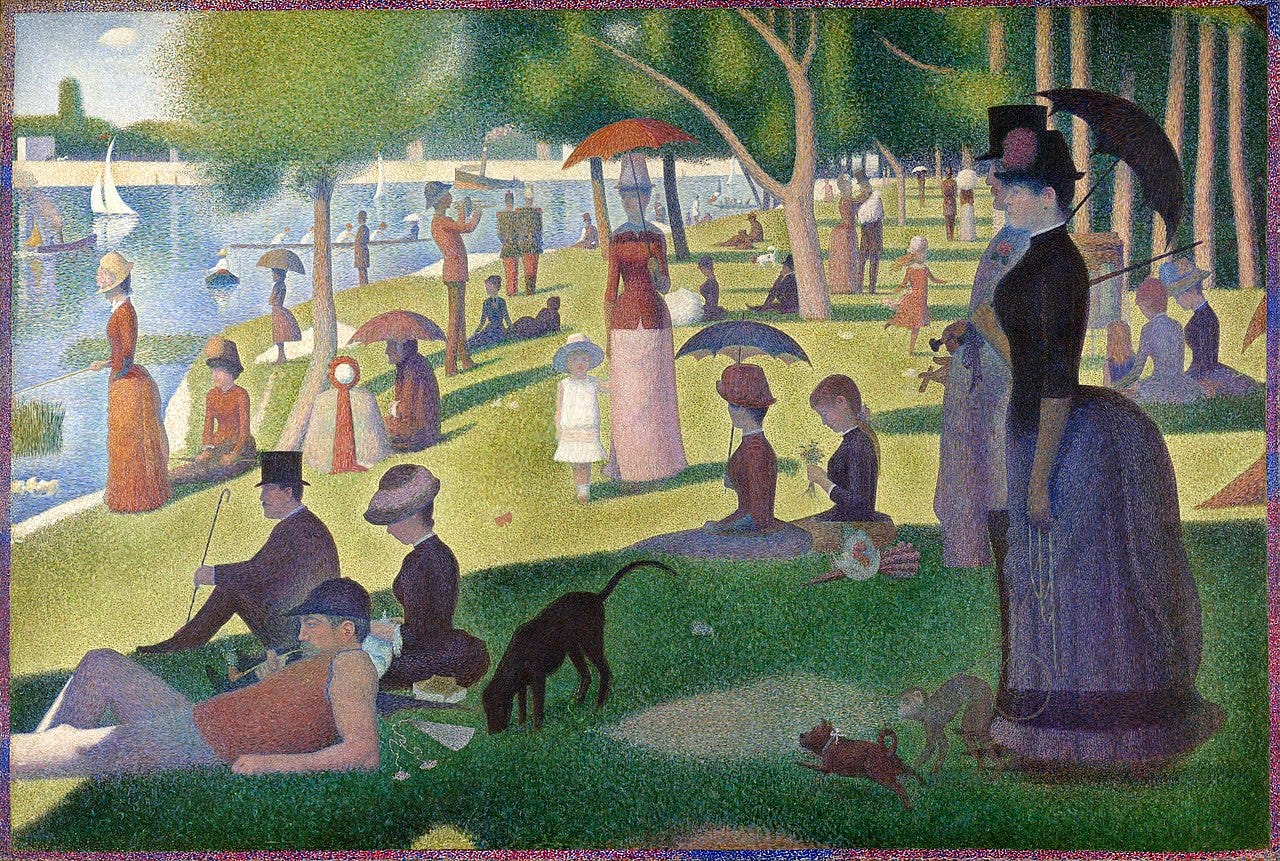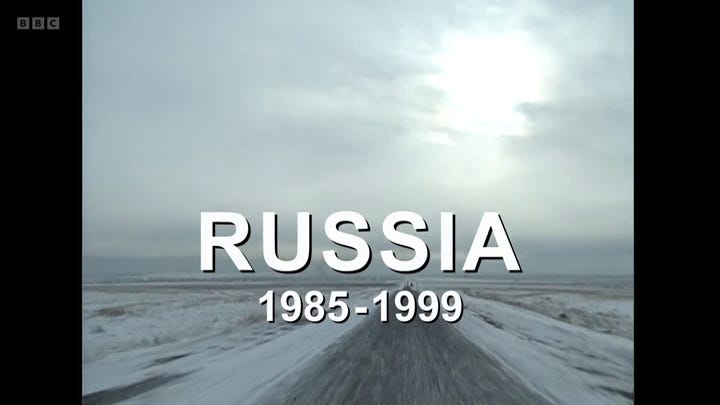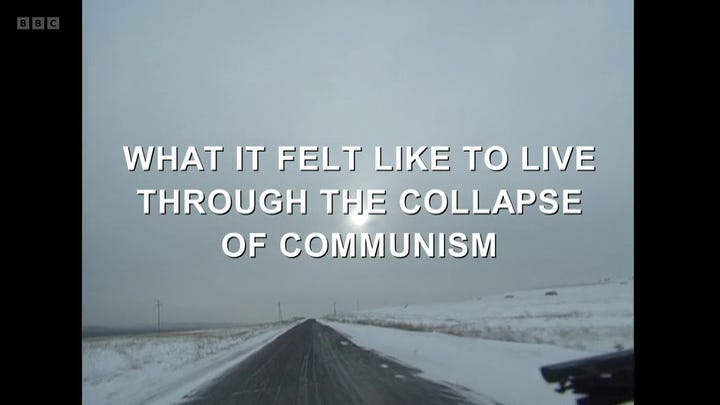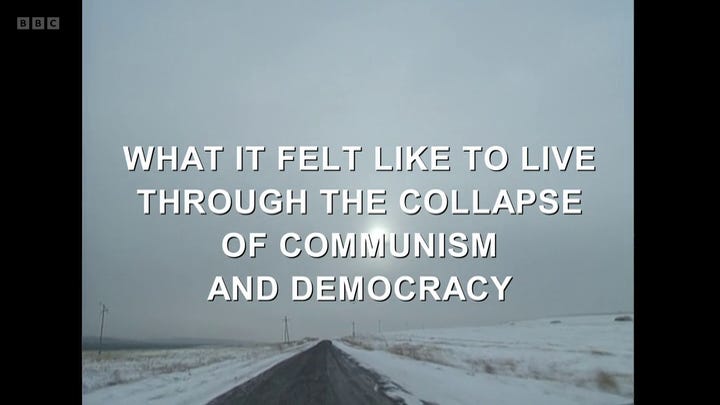TraumaZone (2022)
Adam Curtis on the Collapse of Soviet Communism and Russian Democracy
Imagine taking Georges Seurat’s Un dimanche après-midi à l'Île de la Grande Jatte (1884-86) and running it through a shredder, turning this magnificent work of art into one million pieces of confetti.
Picture further that these one million pieces are mixed up in various volumes and scattered throughout several industrial-scale waste bins not all in the same physical location. Now imagine trying to put this painting back together again by hunting down the locations of the discarded confetti, and re-sorting them into a visual representation as true to the original depiction as possible. This is what legendary British documentarian Adam Curtis has done in his recently-released seven-part series, TraumaZone.
Rather than explain to you what TraumaZone is about, I’ll let three screenshots taken from the first minute of the first episode do it for me instead:
Each and every episode begins with the same title frames, with only the backgrounds changing. The words “AND DEMOCRACY” fade in a few seconds after “WHAT IT FELT LIKE TO LIVE THROUGH THE COLLAPSE OF COMMUNISM”, revealing that this series is a two-act play. The western normie will begin watching this series thinking it is a review of how communism failed, and how democracy was subverted by anti-democratic forces such as the remnants of the KGB. Thankfully, Curtis had something else in mind when producing this remarkable documentary series.
For the small percentage of my readers who do not know who Adam Curtis is, please ask the Lord for forgiveness and do the penance that is assigned to you. In an age of media saturation where even the documentary format is victim to over-saturation (and the accompanying degradation in quality that comes with the tyranny of choice), Curtis has carved out an idiosyncratic niche all his own. For this we should be very grateful.
“Dream-like” and “collage” are two of the words most frequently used to describe Curtis’ documentaries. Built upon foundations composed entirely of rarely-seen archival footage, Curtis is wont to go off on digressions and wild tangents that to the viewing audience seem to violate rules of mainstream documentary production. Alongside the steady barrage of powerful visual imagery that leads us by the nose through his productions, it’s these asides that let you know you’re in Adam’s world, a realm that you are not exactly wanting to leave due to the immersive quality of his story-telling.
My introduction to Adam Curtis’ work was by way of the excellent four-part series “The Mayfair Set” that explored how a small group of the UK’s post-war elite worked to re-shape a declining Britain into the world’s centre of finance (London) via privatization of the country’s economy completed under PM Margaret Thatcher.
I was immediately hooked upon first viewing, as Curtis’ relentless torrent of carefully-selected footage atop his clever narration worked as intended: he left me feeling as if I was part of a select few who were allowed to peek behind the curtains to see who was operating THE MACHINE. In short: he let me gain esoteric insight and knowledge.








